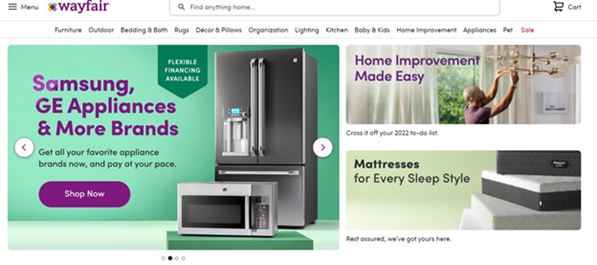
Creating the correct customer-centric business model is your ticket to standing out from your competitors and encouraging customer loyalty.
Customer-centricity is essential for companies since it drives a customer further down the sales funnel. According to research done by Forbes, companies who have customer-centricity in their marketing strategies profit 60% more than those who don’t.
To become customer-centric, it’s important you first understand the core needs and wants of your potential buyers. For example, you find out which channels your customers engage with the most, what they might purchase, and more. However, to succeed in doing this, you have to know the buyer’s journey initially.
At the same time, it isn’t easy to please everyone, and it’s well-known that not every customer has the exact same wants and needs. However, creating strategies and segmenting groups of customers is essential.
in this article, we will look at some great examples that include successful customer-centric companies.
6 examples include successful customer-centric companies
1. Happy Scribe: Lightning-fast in audio translation services

Happy Scribe provides audio translator software that is easy to use and lightning fast with high levels of accuracy. The way you can translate from one language to another is beneficial for customers since they can do it quickly within a short period of time. Moreover, it allows them to learn a new language.
Most translations will take up a tremendous amount of time from customers, and maybe they might be in a rush; however, Happy Scribe does an impressive job in saving clients time but translating from one language to another in only a few minutes.
Furthermore, clients need to upload their audio files supported in more than 120 languages, accents, and dialects. Before the audio is translated, it initially needs to be transcribed. After that, it may either be human-made, which adds up to 99% accuracy, or machine-generated, which has an accuracy of 85%. Afterwards, the translation will be completed within a minute.
This example shows the efficiency of translation services Happy Scribe offers. Moreover, if you visit their website, you’ll see that their review rate scores a near-perfect 5-star rating and is trusted by more than 100 large companies worldwide.
2. Starbucks: efficiency in product feedback and loyalty

Fulfilling customer needs and product feedback is an essential follow-up for Starbucks. By building itself on customer needs and evaluating product feedback, Starbucks has adapted its marketing strategy and operations to enhance its efficiency. However, it might be challenging to accomplish this since they provide many customization options regarding their products that consumers have enjoyed in the past years.
Starbucks has increased efficiency without sacrificing product quality with its loyalty program. The loyalty program offers in-store pickups and membership discounts that encourage visitors to come again. In addition, via the app, members are allowed to access an excellent level of customization options available in-store, even having chances to pick up a drink from Starbucks at a scheduled time.
Even though many customers are enjoying these fast services, customers who have more time may not experience the same thing at Starbucks.
Starbucks took advantage of its loyalty program to fulfill customers’ needs that are rushing, and this approach has paid off for Starbucks.
Starbucks became a popular app in many restaurants worldwide and achieved 20 million users, being the #1 company in customer loyalty.
3. McDonald’s: effective in customer satisfaction

Mcdonald’s has always been excellent at delivering suburb services and an outstanding customer experience, leading it to be customer-centric at all times.
Mcdonald’s has dramatically influenced all cities it operates in to create a high customer-centric experience. For instance, the “Happy meal” is an excellent example of the superb customer experience it offers.
Moreover, to be fully customer-centric, Mcdonald’s started analyzing data in-depth and gained further insights regarding customer needs and the issues associated with its products and services. After all, if you don’t know about your customers, you’ll have difficulty understanding their pain points.
Mcdonald’s is successful in collecting data since it has used various channels such as social media platforms, customer survey forms, figuring out customers’ pain points, and more.
Furthermore, they figured out what most people want in their all-day menu, including breakfast, lunch, and dinner. So, this is what Mcdonald’s did:
- Introduced new health foods, including egg whites, oatmeals, fruit & maple, and more
- Offering side options in customer’s breakfast meals such as hash browns and egg McMuffins
After Mcdonald’s successfully introduced an all-day breakfast menu, it saw some all-time highs in its revenue. The first time this occurred was in 2016, and it exceeded its financial predictions.
4. Wayfair: Uses AI for data personalization

Wayfair offers over eight million products from the furniture and decor industry. There are more than 70,000 options to choose from, and Wayfair has incorporated AI to ensure it carries out a customer-centric approach, improving the user experience and reducing time consumption.
Wayfair uses predictive analysis and AI to ensure an in-detail buyer persona is created, so customers can save time by eliminating the need to scroll through many pages and products to find what they need or prefer. Machine learning capabilities are used for this to be possible. The customer-centric strategy here with Wayfair is that they are seeking to save customers time.
5. Patagonia: builds transparency

Patagonia is fully committed to environmental goals for the upcoming decades and has enhanced its marketing efforts for the environment. According to a study by Forbes, Gen Z is considered the “sustainable generation,” meaning they are more focused on a greener economy and world.
Patagonia solves a huge issue since it doesn’t only focus on sustainable efforts, but puts transparency as a top priority, and provides wealthy information regarding product development and process to its customers. Moreover, Patagonia has been more willing to answer questions regarding products and services, being honest about any issues concerning their quality. The company’s honesty to its customers shows how trustworthy they can be and how customer-centric they are.
Comparatively, Patagonia finds trust with customers essential to their business’s success and finds new ways to appreciate their services. From time to time, they create repair guides, fix products, and re-use existing materials to purchase a new one. For instance, Patagonia launched a new program called the “worn wear college tour,” where they would fix all clothes bought to them by university students. Although, to be honest, it doesn’t favor Patagonia financially; however, it does enhance customer satisfaction and brings a broader image to how much they care about customers.
6. Amazon’s personalization level

Recommendations are what drive Amazon sales. According to a study by Bigdata, Amazon’s personalized recommendations are what make nearly half of their total sales! All of these recommendations come from Amazon scanning your buying history, items you have added or even abandoned in your cart, and items you have recently viewed. Or sometimes, even, there are items other customers have purchased, Amazon will recommend similar products. Moreover, these personalized recommendations are what makes Amazon so customer-centric and successful.
Personalization helps attract new customers and transform them into long-term ones. Research shows that personalizations have immensely influenced a company’s revenue rate by 10% to 15%! Moreover, shoppers who have personalization within a company are most likely to return to a site since not every organization provides these kinds of services on the scale that Amazon does.
Wat can we learn from Amazon?
Amazon has achieved more revenue only from learning more about its customers and is undoubtedly one of the most significant global retail leaders with various options to choose from. As a result, Amazon has built a high trust rate between them and their customers. It’s now time you take the necessary steps to do the same.
Wrapping it up
These are our top examples of deeply customer-centric companies and have hit record high numbers from their success rates. Of course, what is most important is for a company to focus on their customers, but many fail to do so, which is where they fail to increase their revenue rates.
Take into account what your business can offer to your customers and in which way you differ from your competitors. If you carefully read through each customer-centric example we provided you with, you’ll notice that each company had something unique that the other companies didn’t have. After all, that’s what makes a company successful, providing something unique and something more than the rest.
Figure out what you can do and what your business stands for. Even if you offer something that won’t immensely benefit you at the beginning financially, if it increases customer loyalty, then, don’t think twice about incorporating it in your strategy to be customer-centric!




